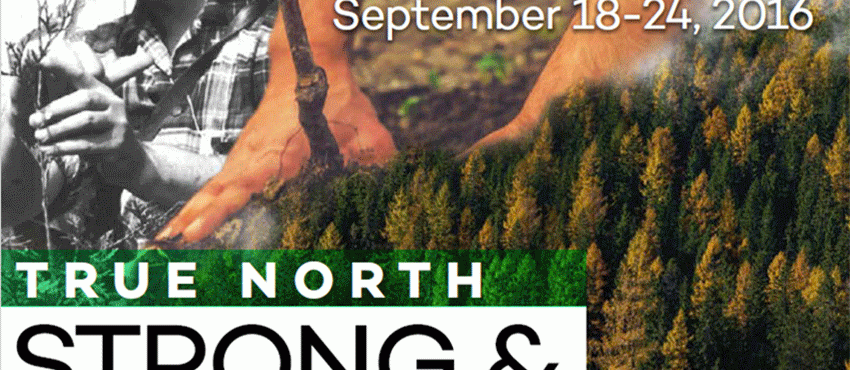True North, Strong and Green
INFO BULLETIN
VICTORIA – Sept. 18-25, 2016, is National Forest Week in Canada – a time to celebrate Canada’s forests and the benefits they provide to Canadians. The theme this year is True North, Strong and Green.
There are many reasons why this year’s theme is particularly suited to British Columbia. B.C. is certainly green – it’s home to more forest than any other province in Canada, with 55 million hectares of forested land, most of which is owned by the citizens of B.C.
British Columbia is Canada’s most ecologically diverse province, with temperate rainforests, dry pine forests, alpine meadows and more. B.C. is also Canada’s most biologically diverse province with more than 40 different species of native trees. B.C. also is home to more than half of the country’s wildlife and fish species.
Forestry in B.C. is also strong, with 22 million hectares of the province’s forest land is available for harvesting by the forest industry. Of that amount, about 200,000 hectares is harvested each year. B.C. is the largest producer of softwood lumber in Canada (52%). One in 16 B.C. jobs is tied to the forest industry.
Forest practices in B.C. are regulated by the Forest and Range Practices Act, which sets out government’s objectives for how B.C. forests should be managed, and is one of the strongest regulatory regimes in the world.
Did you know that B.C. is the only jurisdiction in the world with an independent watchdog organization that provides oversight of forest companies and government agencies to ensure forest planning and practices are sound and that the public’s interests in B.C.’s forests are being served?
B.C.’s Forest Practices Board has carried out this role for over 20 years, acting on behalf of the public owners of B.C. forests. The board is a part of the forest industry’s competitiveness and helps to make B.C. both “Strong and Green.”
Through its audits and investigations, the board encourages continuous improvement in forest practices by identifying issues and recommending better practices. It encourages competitiveness by validating good performance when it sees it, and by pushing companies to meet or exceed environmental standards and demonstrate environmental responsibility. Companies are held to public account if they don’t meet regulatory requirements or public expectations for forest practices. And this makes B.C.’s industry stronger and more environmentally responsible than many other jurisdictions that do not have the same level of oversight.
But the board doesn’t just stop there – it also looks at the B.C. government’s management of forests – examining the work of the BC Timber Sales Program and the government’s Compliance and Enforcement program. The board recommends improvements to regulations, policies and standards and advocates for government to enforce the regulatory regime appropriately and practice stewardship of the public’s forests.
For all these reasons and more, B.C. is True North, Strong and Green. B.C. has an abundance of forests, a strong forest industry that provides employment and revenues, a strong regulatory environment for managing our forests, and independent oversight that encourages stewardship of forest resources by industry and government.
September 21, 2016


